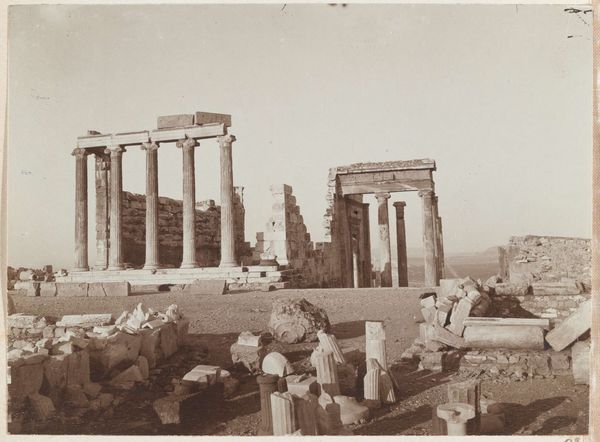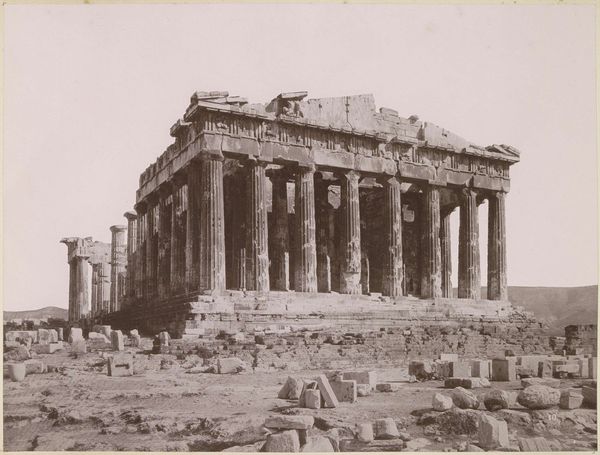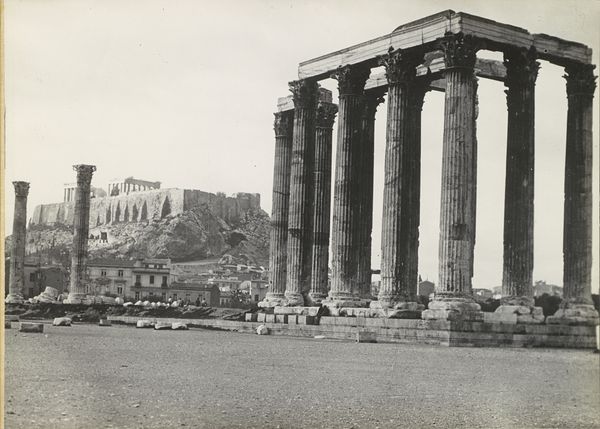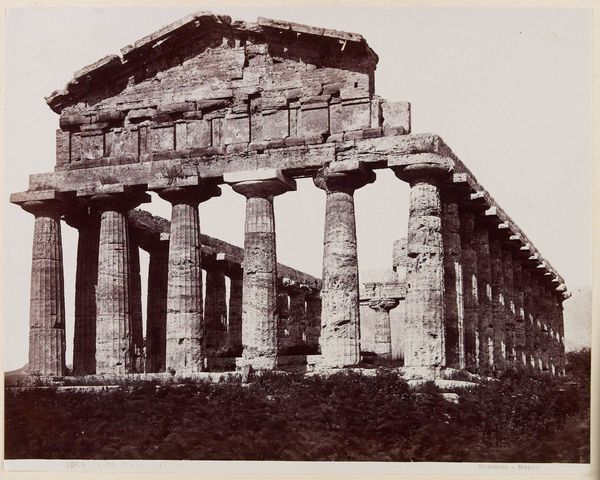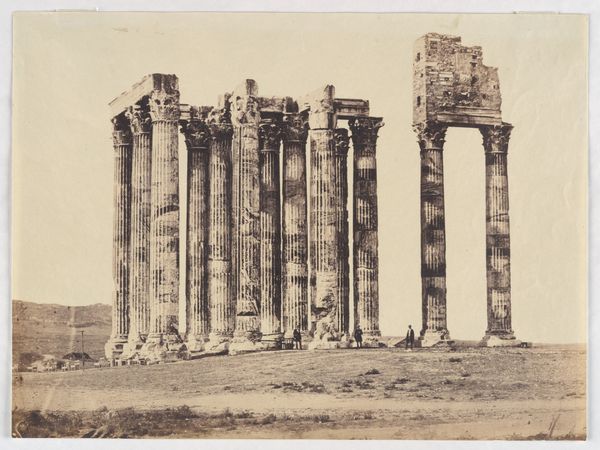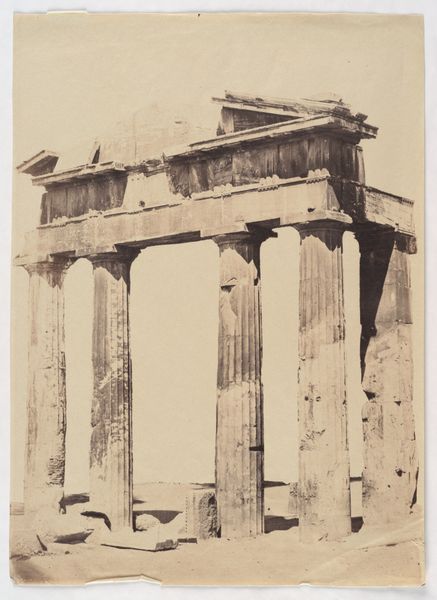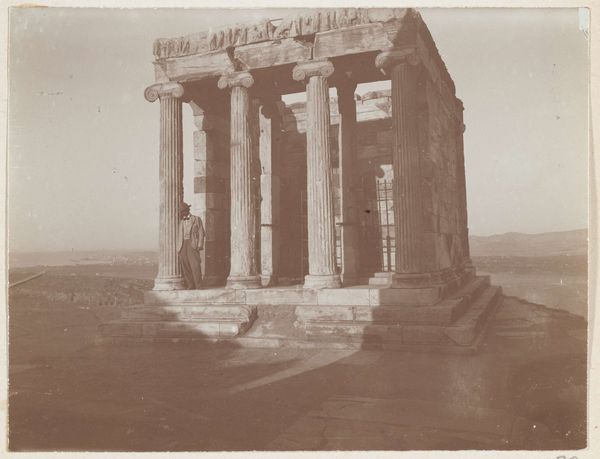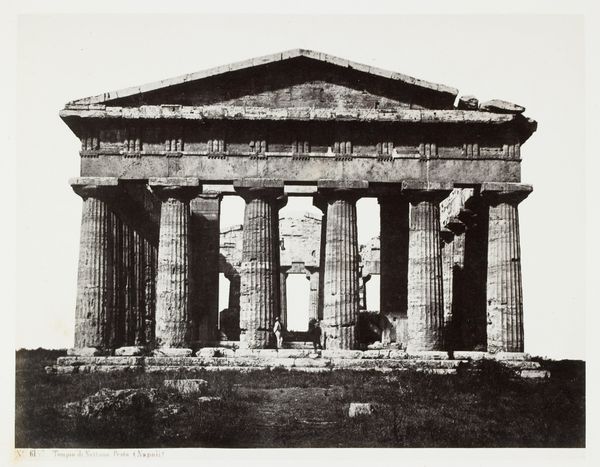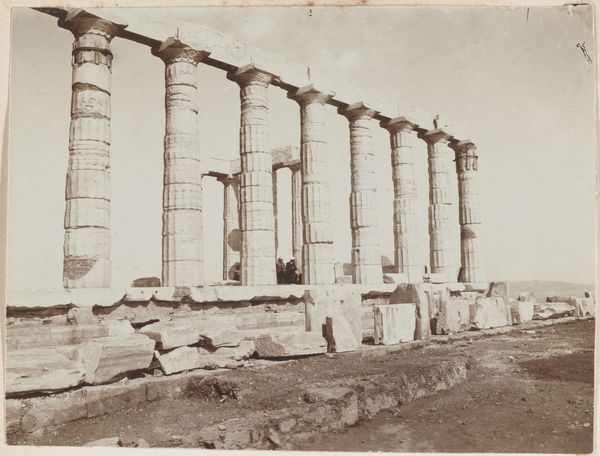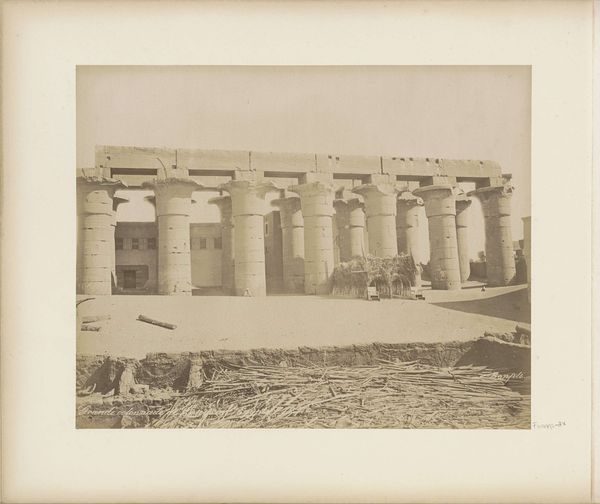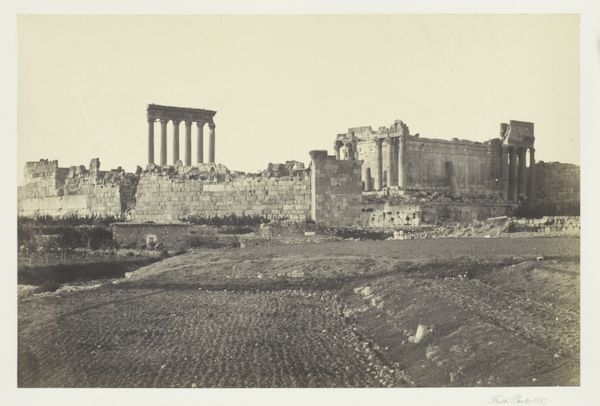
photography, albumen-print, architecture
#
greek-and-roman-art
#
landscape
#
classical-realism
#
photography
#
ancient-mediterranean
#
albumen-print
#
architecture
Dimensions: height 220 mm, width mm
Copyright: Rijks Museum: Open Domain
Curator: Immediately, the sheer scale strikes me; those towering columns against the washed-out sky give a sense of enduring power but also mournful desolation. Editor: That sense of desolation speaks to layers of history and cultural shifts doesn't it? What we're looking at is an albumen print made by Rhomaides Frères, sometime between 1880 and 1890. The print depicts the Temple of Olympian Zeus in Athens. Curator: Albumen—the very material, egg whites, almost feels alchemical for capturing something so grand. The fluted columns still reach for the sky, whispering stories of classical idealism. I'm especially drawn to how the light interacts with the eroded surfaces; each fissure a testament of time's passage, which echoes in a continuous return to antique virtues. Editor: I see it as more than just a romantic ruin; it's a symbol of power structures, the foundation of Western concepts like democracy that have been both revered and weaponized throughout history. Think about the context in which this photograph was created—the late 19th century. There was intense imperial and colonial interests intertwined with these historical symbols, that created ideas and justifications, as well. The Parthenon itself became this charged symbol for colonialism and modern political legitimacy. Curator: True, these structures became metaphors for new forms of political influence, but on a more personal level, classical architectural principles have offered symbolic structural support in diverse fields. These architectural forms can convey an essential return to "fundamentals" during crisis. Editor: Still, we can't forget these images often omit the complicated relationships of power and the complex historical forces at play. This idealized view overlooks that context in service of aestheticizing and dehistoricizing it. It encourages an admiration which conveniently separates the art object from the more challenging realities. Curator: And yet the aesthetic remains compelling, and the very emptiness in the foreground could speak to a desire for a tabula rasa. An invocation to look at what is elemental within. Editor: Perhaps a productive tension then, between that foundational appeal, the dangers of uncritical romanticism, and the photograph itself as an active force shaping that view. Curator: I think that’s a lovely note to conclude on; thank you for sharing that perspective. Editor: Of course. It's fascinating to view them through a multi-lens perspective.
Comments
No comments
Be the first to comment and join the conversation on the ultimate creative platform.
